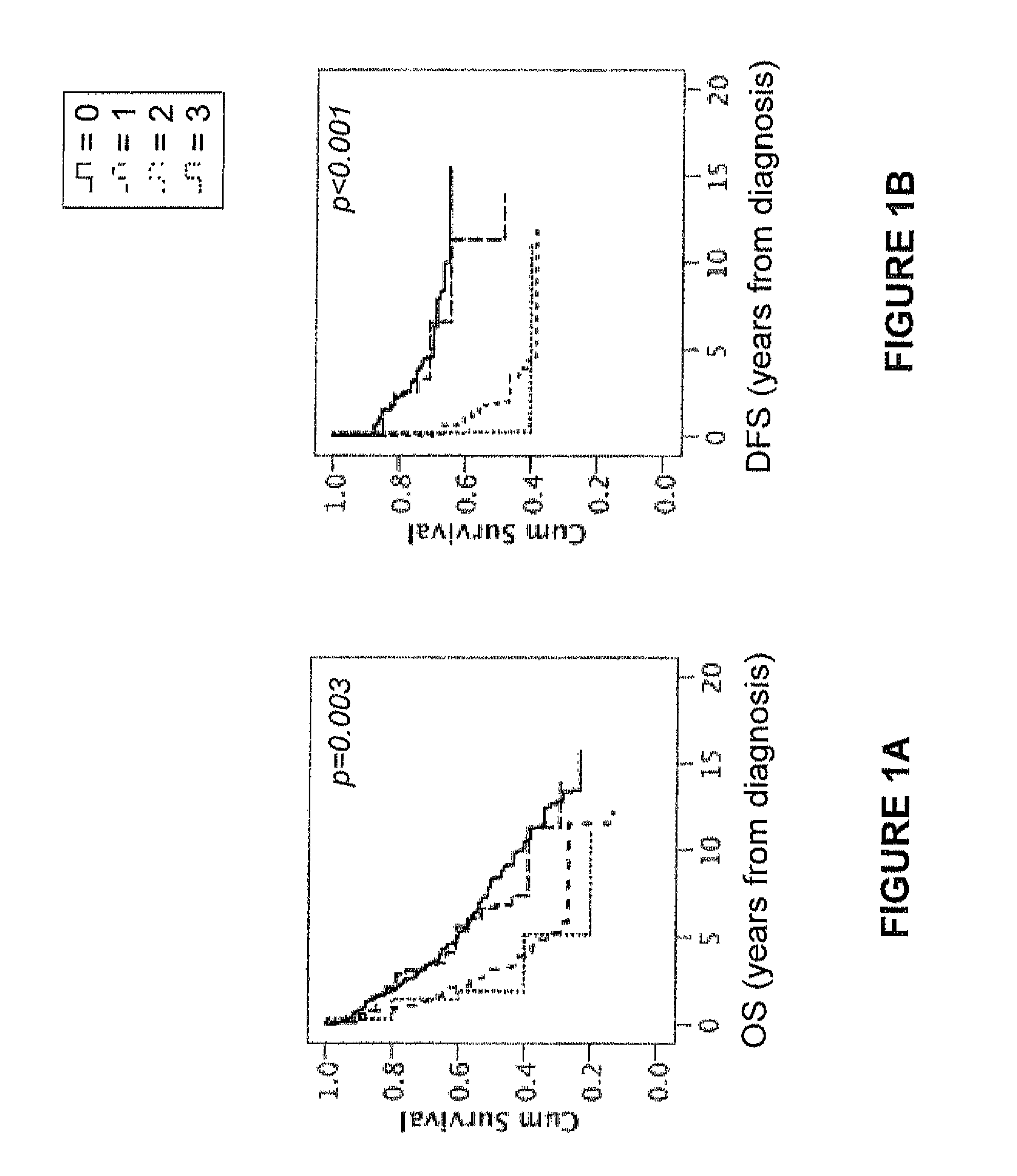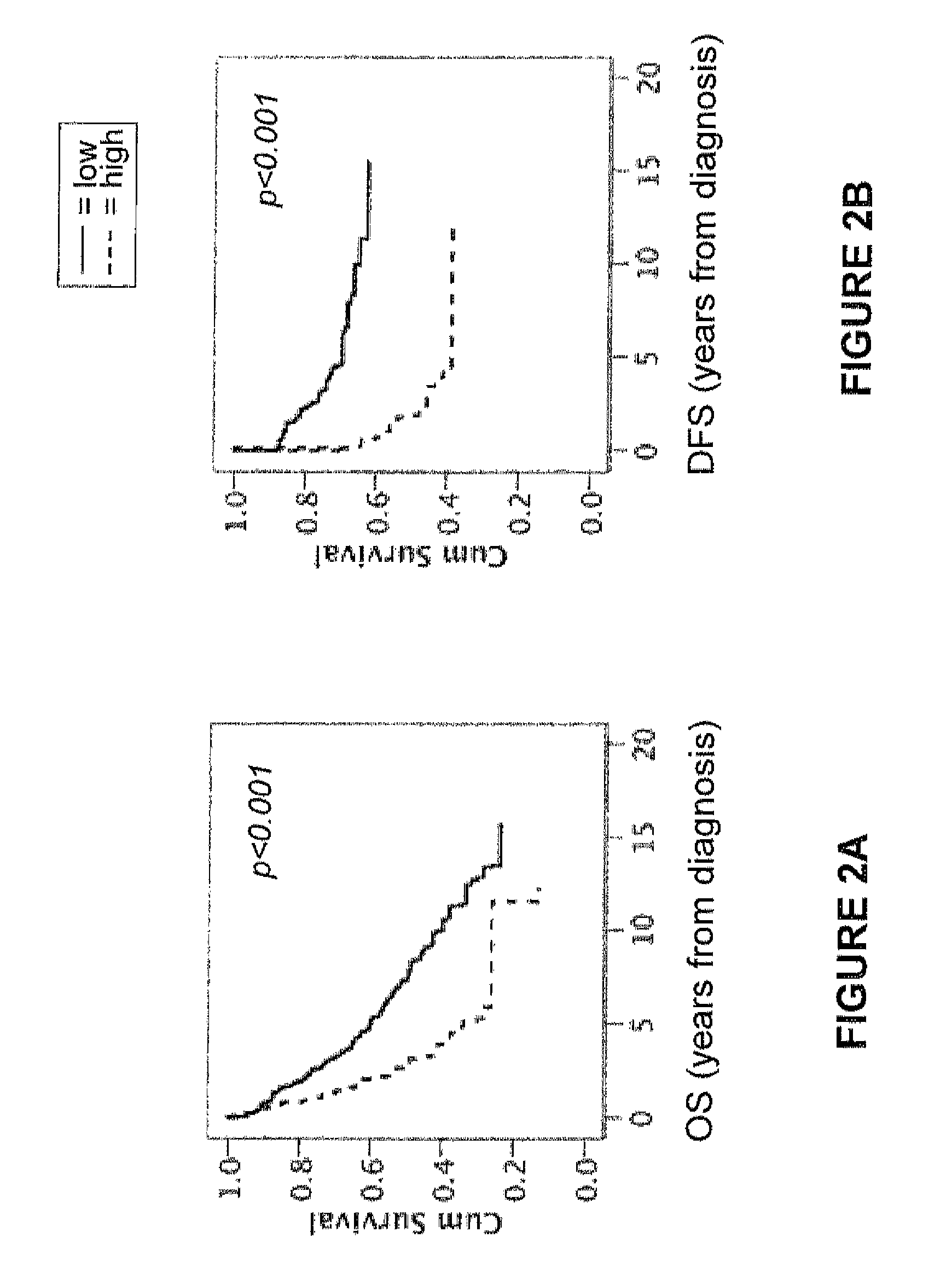PODXL protein in colorectal cancer
a colorectal cancer and protein technology, applied in the field of colon cancer prognosis and colorectal cancer treatment, can solve the problems of not being able to evaluate and standardize the formation of cancer following precancerous proliferation stages, and not being able to fully define cancer, so as to improve the evaluation of the effect of adjuvant treatmen
- Summary
- Abstract
- Description
- Claims
- Application Information
AI Technical Summary
Benefits of technology
Problems solved by technology
Method used
Image
Examples
examples
Generation of Mono-Specific Antibodies Against PODXL Protein and Use Thereof to Detect PODXL Protein in Colorectal Cancer Samples
1. Generation of Antigen
a) Materials and Methods
[0492]A suitable fragment of the target protein encoded by the EnsEMBL Gene ID ENSG00000128567 was selected using bioinformatic tools with the human genome sequence as template (Lindskog M et al (2005) Biotechniques 38:723-727, EnsEMBL, www.ensembl.org). The fragment was used as template for the production of a 138 amino acid long fragment (SEQ ID NO:1) corresponding to amino acids 278-417 of the PODXL protein ENSP00000319782 (SEQ ID NO:2) or alternatively the amino acids 310-447 of the splice variant ENSP00000367817 (SEQ ID NO:3).
[0493]A fragment of the PODXL gene transcript containing nucleotides 832-1245 of EnsEMBL entry number ENST00000322985 (SEQ ID NO:4), or alternatively nucleotides 928-1341 of the splice variant ENST00000378555 (SEQ ID NO:5), was isolated by a Superscript™ One-Step RT-PCR amplificatio...
PUM
 Login to View More
Login to View More Abstract
Description
Claims
Application Information
 Login to View More
Login to View More - R&D
- Intellectual Property
- Life Sciences
- Materials
- Tech Scout
- Unparalleled Data Quality
- Higher Quality Content
- 60% Fewer Hallucinations
Browse by: Latest US Patents, China's latest patents, Technical Efficacy Thesaurus, Application Domain, Technology Topic, Popular Technical Reports.
© 2025 PatSnap. All rights reserved.Legal|Privacy policy|Modern Slavery Act Transparency Statement|Sitemap|About US| Contact US: help@patsnap.com



